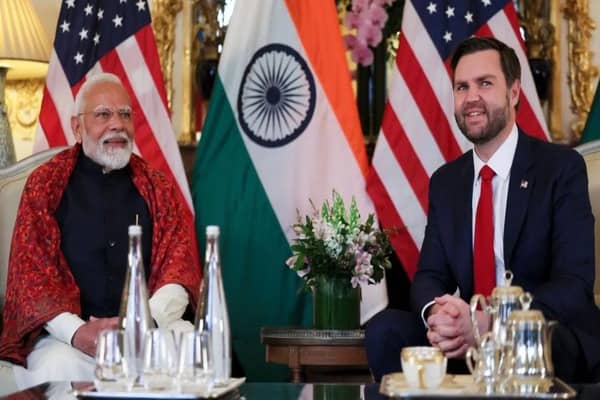For the past two years, Prime Minister Narendra Modi has aimed to transform India into a high-income, developed nation by 2047. Projections suggest India could become the world’s third-largest economy within six years. According to the World Bank, high-income economies have a per capita Gross National Income of $13,846 (£10,870) or more, while India, with a per capita income of about $2,400 (£1,885), currently falls into the lower middle-income category. Many economists have expressed concerns that India may be at risk of falling into a “middle-income trap,” where rapid growth becomes difficult and competition with advanced economies diminishes. Economist Ardo Hannson describes this situation as a “trap” where rising costs erode competitiveness.
A recent World Bank report echoes these concerns, indicating that at the current growth rate, India would take 75 years to achieve just a quarter of America’s per capita income. The report highlights that over 100 countries, including India, China, Brazil, and South Africa, face significant obstacles that could impede their journeys to high-income status in the coming decades. Researchers analyzed data from 108 middle-income countries, which account for 40% of the global economic output and nearly two-thirds of global carbon emissions. These nations house three-quarters of the world’s population and a significant portion of those living in extreme poverty. The report states that these countries encounter severe challenges in escaping the middle-income trap, such as aging populations, increasing protectionism in advanced economies, and an urgent need for accelerated energy transitions.
“The battle for global economic prosperity will be largely won or lost in middle-income countries,” states Indermit Gill, chief economist of the World Bank and one of the report’s authors. He emphasizes that many of these nations rely on outdated strategies for economic advancement, focusing excessively on investment or shifting too quickly toward innovation. For instance, businesses in middle-income countries often experience slow growth. In India, Mexico, and Peru, firms operating for 40 years typically double in size, while their counterparts in the U.S. grow seven-fold in the same timeframe. This suggests that while firms in these nations may survive for decades, they struggle to achieve significant growth.
Gill and his colleagues advocate for a new approach: middle-income countries must increase investments, adopt new technologies, and foster innovation. The report cites South Korea as a successful example. In 1960, South Korea’s per capita income was $1,200, but by 2023 it surged to $33,000. Initially, the country focused on boosting both public and private investment. In the 1970s, it adopted an industrial policy encouraging local firms to integrate foreign technology and advanced production methods. Samsung, originally a noodle-maker, transitioned to manufacturing TV sets by licensing technology from Japanese companies.
This growth created a demand for skilled workers, prompting the government to increase funding and set targets for public universities to cultivate these skills. Today, Samsung stands as a global innovator and a leading smartphone manufacturer. Other countries, like Poland and Chile, have followed similar trajectories, with Poland enhancing productivity through Western European technologies and Chile driving local innovation by adapting Norwegian salmon farming techniques.
Historical evidence indicates the likelihood of encountering a middle-income trap. Researchers note that as countries grow wealthier, they often hit a plateau around 10% of U.S. GDP per capita (approximately $8,000 today), which places them in the middle-income bracket. Since 1990, only 34 middle-income countries have transitioned to high-income status, with over a third benefiting from integration into the European Union or newly discovered oil reserves. Economists Raghuram Rajan and Rohit Lamba estimate that, even with a robust 4% growth rate, India’s per capita income will only reach $10,000 by 2060, lagging behind China’s current level.
In their book “Breaking The Mould: Reimagining India’s Economic Future”, they argue for better strategies, noting, “In the next decade, we will have a potential population dividend with an increase in our working-age population, before we, like others, face aging.” They emphasize the need to create quality employment for the youth to accelerate growth and aim for an upper middle-class status before the population begins to age. The critical question they pose is, “Can India become rich before it becomes old?”



